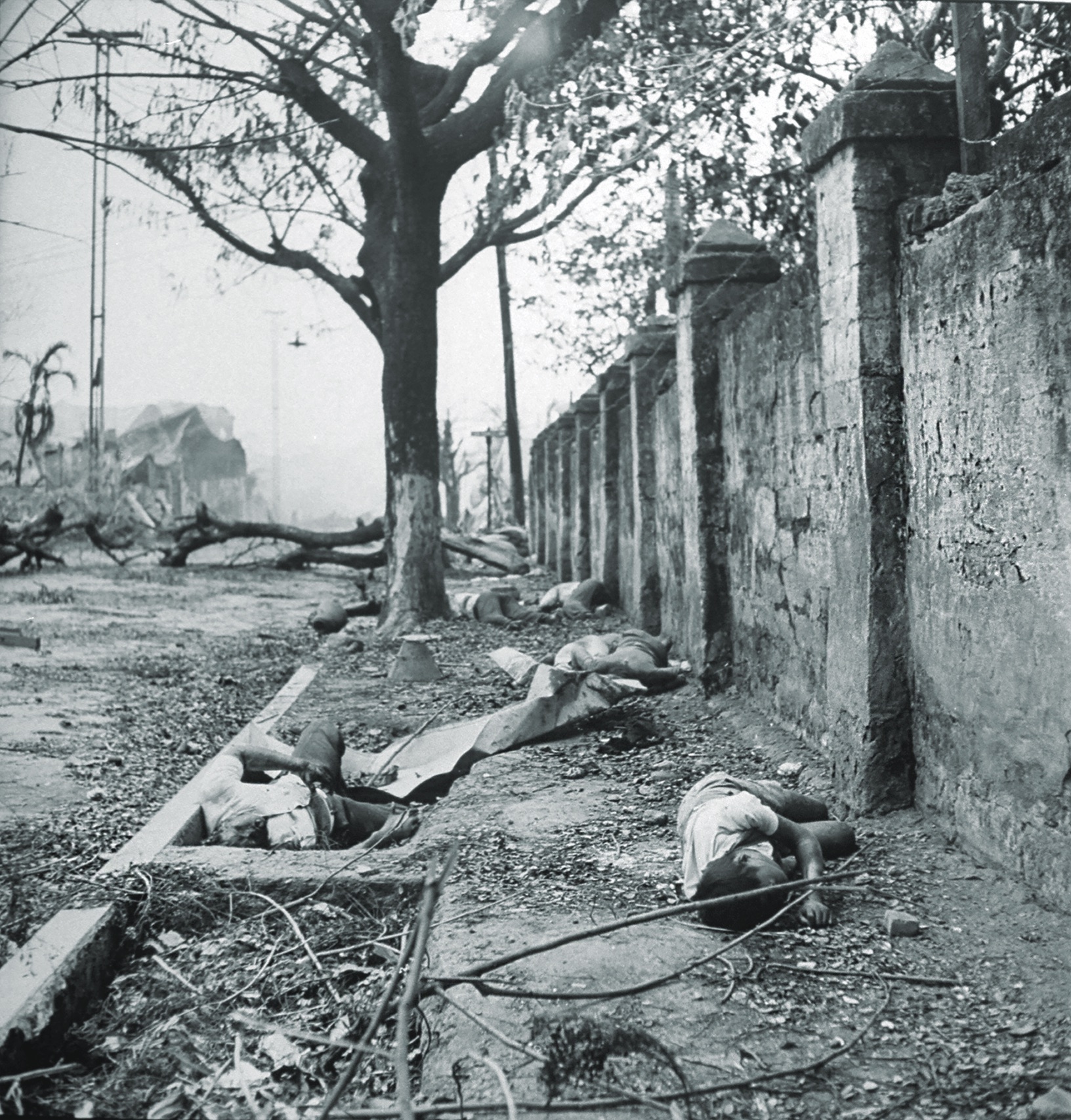Approximately 100,000 Filipinos died in Japan’s wanton destruction of the port city in 1945.
Q: What was the military purpose behind Japan’s destruction of Manila as its soldiers retreated from the Philippines in 1945?
—Anthony L. Gregg, Providence, R.I.
A: In short, there was no military purpose. None whatsoever.
Manila’s only strategic advantage involved its excellent port, which offered the United States a deep-water anchorage for the navy. Beyond the port, Manila—home at the time to an estimated one million men, women, and children—was a strategic liability. The disastrous three-year Japanese occupation had so wrecked Manila’s economy that starvation claimed hundreds of lives every day while desperate parents abandoned their children to orphanages or even sold them. Grave robbing ran rampant, as hungry residents plundered the dead for eyeglasses, dentures, and even clothing—anything that could be bartered for a fistful of rice.
This was the tragic backdrop for the Battle of Manila, which claimed an estimated 100,000 lives, many massacred in widespread atrocities by Japanese troops. It’s important to note that captured battlefield records show that violence against civilians was not random, but rather ordered by Japanese officers, often done in a manner to spare ammunition. Such orders don’t specify a reason why civilians were singled out, but in all likelihood, locals were punished for their continued loyalty to the United States, reflected not only in the guerrilla attacks against the Japanese but also in the general population’s passive resistance.
Lastly, General Tomoyuki Yamashita’s orders to the on-the-ground commander, Rear Admiral Sanji Iwabuchi, were for his troops to do everything possible to slow the American advance, even if that meant holding them up by as little as half a day. In the end, the urban battle dragged on for 29 days. As the U.S. Army’s historian later noted, the city’s tragic destruction and the slaughter of its people ultimately proved a “most effective delaying action.” ✯
—James M. Scott, author of the 2018 book, Rampage. For more, see Scott’s December 2018 article for World War II, “Battlefield as Crime Scene: The Japanese Massacre in Manila,” at historynet.com.
Send queries to: Ask World War II, 9720 Wilshire Blvd., 6th floor, Beverly Hills CA 90212 or email: worldwar2@historynet.com
This article was published in the August 2021 issue of World War II.





